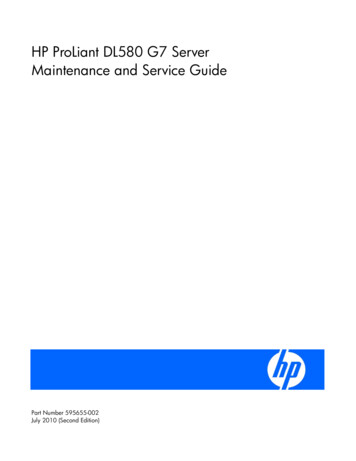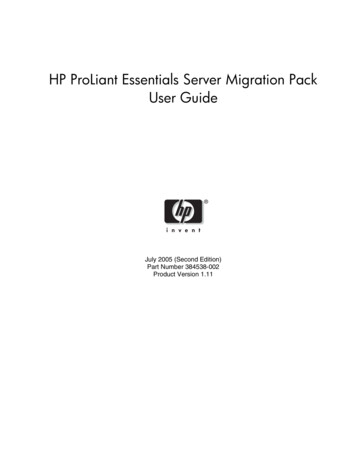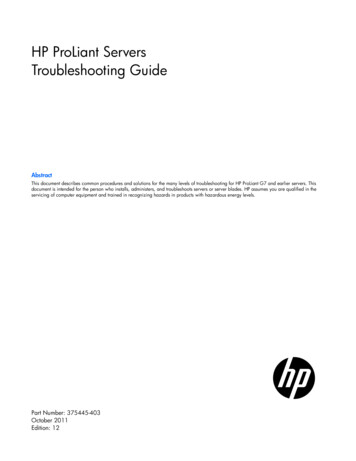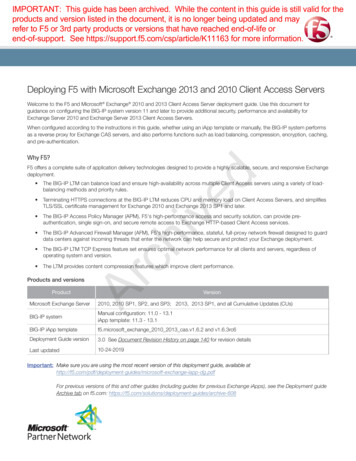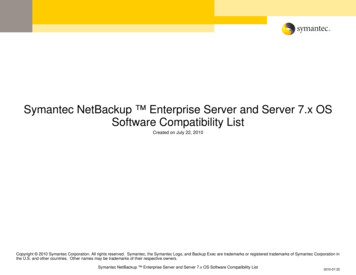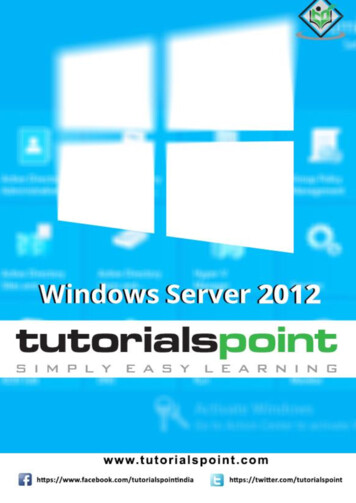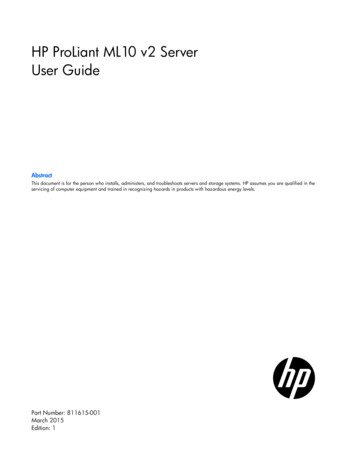
Transcription
HP ProLiant ML10 v2 ServerUser GuideAbstractThis document is for the person who installs, administers, and troubleshoots servers and storage systems. HP assumes you are qualified in theservicing of computer equipment and trained in recognizing hazards in products with hazardous energy levels.Part Number: 811615-001March 2015Edition: 1
Copyright 2015 Hewlett-Packard Development Company, L.P.The information contained herein is subject to change without notice. The only warranties for HP products and services are set forth in the expresswarranty statements accompanying such products and services. Nothing herein should be construed as constituting an additional warranty. HP shallnot be liable for technical or editorial errors or omissions contained herein.Linux is the registered trademark of Linus Torvalds in the U.S. and other countries.Microsoft and Windows are U.S. registered trademarks of the Microsoft group of companies.MicroSD is a trademark or a registered trademark of SD-3C in the United States, other countries or both.Red Hat is a registered trademark of Red Hat, Inc. in the United States and other countries.VMware is a registered trademark of trademark of VMware, Inc. in the United States and/or other jurisdictions.
ContentsComponent identification . 6Front panel components . 6Front panel LEDs and buttons . 7Front panel LED power fault codes . 7Rear panel components . 8Rear panel LEDs and buttons . 9System board components . 9DIMM slot locations . 10PCIe expansion slot definitions . 11System maintenance switch . 11NMI functionality . 11Drive numbering . 12Operations. 13Power up the server . 13Power down the server . 13Install the tower bezel . 13Unlock the tower bezel . 14Remove the tower bezel . 14Install the access panel. 15Remove the access panel. 15Install the air baffle . 16Remove the air baffle . 17Setup. 19Optional installation services . 19Optimum environment . 19Space and airflow requirements . 19Temperature requirements . 20Power requirements . 20Electrical grounding requirements . 20Server warnings and cautions . 21Identifying the contents of the server shipping carton . 21Installing hardware options . 21Installing the operating system. 22Powering on and selecting boot options . 22Registering the server . 22Hardware options installation . 23Introduction . 23Drive options . 23Drive installation guidelines . 23Installing a drive . 23Drive enablement option . 25Controller options . 28Installing an HP H220/H221 host bus adapter . 28Optical drive option . 30Contents3
Memory options . 33HP SmartMemory . 33DIMM identification . 33Single-rank and dual-rank DIMMs . 34Memory subsystem architecture . 34ECC memory . 34General DIMM slot population guidelines . 35Installing a DIMM . 35Setting up the HP PS1810-24G Switch (optional) . 36HP Trusted Platform Module option . 37Installing the Trusted Platform Module board . 38Retaining the recovery key/password . 40Enabling the Trusted Platform Module. 40Cabling . 41Cabling overview . 41Storage cabling . 41Drive to system board (SATA drive support only) . 41Drive to controller (SATA and SAS drive support) . 42Optical drive cabling . 42Software and configuration utilities . 43Server mode . 43Product QuickSpecs . 43HP iLO . 43Integrated Management Log . 44HP Insight Remote Support . 44HP Insight Diagnostics . 45HP Insight Diagnostics survey functionality . 45Scripting Toolkit for Windows and Linux. 46HP Service Pack for ProLiant . 46HP Smart Update Manager . 46Re-entering the server serial number and product ID . 46Utilities and features . 47HP Smart Storage Administrator . 47Automatic Server Recovery . 47USB support . 48Redundant ROM support . 48Keeping the system current . 48Access to HP Support Materials . 48Drivers . 49Software and firmware . 49Operating System Version Support . 49Version control . 49HP operating systems and virtualization software support for ProLiant servers . 50HP Technology Service Portfolio . 50Change control and proactive notification .
† Facility power is not present, power cord is not attached, no power supplies are installed, power supply failure has occurred, or the power button cable is disconnected. Front panel LED power fault codes The following table provides a list of power fault codes, and the subsystems that are affected. Not all power faults are used by all servers.


